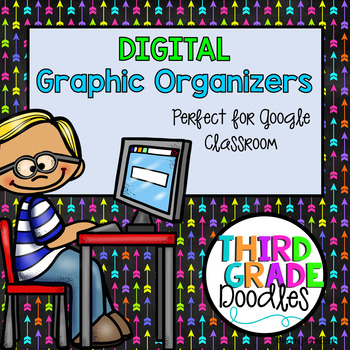This post may be coming to you a bit late, but hopefully I can provide some tips and resources to support your efforts to bring small group reading instruction to your students in a way that is manageable for both you and them! IT CAN BE DONE!
School ended (as we know it) here in Michigan on March 13 (yes, it was Friday the 13th). After the shock wore off, panic began to set in. My thoughts were spinning: "How will we support our striving readers, who are already so far behind their peers? They receive so much support at school...single dips, double dips, triple dips! They can't afford this time away from school." I immediately began to think about how we could continue to provide the reading support that they need remotely. Enter Google Meet...(or Zoom, if that's your "classroom" of choice). Using a virtual meeting platform, and a few key tech tools, I was able to get small group reading instruction rolling with my students in a way that is almost as good as "the real thing."
TECHNICAL SET UP
You will need to use either Google Meet or Zoom to connect with your students virtually, and your students will need access to the same platform. In our district, we were able provide devices to those students that don't have them, and a system was set up for them to receive free wifi with the help of local internet providers.In a Google Meet, you are able to see your students, talk with them, and present visual aids to use in your lessons. One issue with Google Meet, is that when you present your screen, you can no longer see your students, which is a huge problem in a guided reading lesson. There are several ways to remedy this situation. Eric Curts from Contral Alt Achieve has a great video to help you navigate that.
My favorite set up is to use my phone as a second monitor. I simply log in to the Google Meet app on my phone and on my PC. I use the PC to present visuals, and I use my phone to see my student. I work with students one on one, so I can actually "pin" their face on my phone's Google Meet so I only see them and not what I'm presenting. With a small group of students, you would be able to use the sidebar or tile display mode and it would work just as well (as long as you have 4 or fewer students at a time).
I also needed a white board. I tried using an actual white board with real markers and holding it up to the camera, but the glare was so bad that students had a difficult time seeing what I was showing them. So I set up a virtual white board via my Ipad mini tablet. I mirror my table to my PC monitor using the free version of an app called ApowerMirror. I had to load that onto my tablet and my PC. It was easy and worked flawlessly. I then loaded another free app on my tablet called "Whiteboard". Voila! Now when I am in present mode, my students can see what I write on the whiteboard app of my tablet. I can toggle between this whiteboard and other visuals that I am using, such as digital texts, and Google Slides.
Here is what my set up looks like:
FINDING GOOD DIGITAL TEXT
You will need access to leveled digital text for your guided reading lessons. At school, we have well-stocked classroom libraries and bookrooms, with REAL books! That luxury is gone, gone, gone! So, digital text is the only way to go for remote guided reading lessons. You will need to be able to display text in present mode, so that all students can see the book. It is also nice if they are able to access the same digital text after your lesson so they can re-read for fluency practice.The great news is that there are several sources of FREE digital text available during "these unprecedented times." Here are my favorites:
- Literacy Footprints - This is brand new! LP responded very quickly to the need to have leveled digital text, and they created an AMAZING platform for teachers and students, with a healthy collection of leveled texts. They also put together Read at Home kits of real books that are fairly inexpensive, so that if you have the funding, you can ship the books to your students so they have a hard copy of the texts that you are using with them virtually
- Reading A-Z - Most of you are probably familiar with this platform. They have a very extensive collection of digital text resources. The wonderful thing about RAZ is that they include lesson ideas and worksheets to go with each book. RAZ has extended their free trial through the end of June. RAZ also has some simple annotation tools that can be used when projecting a text (highlighting, masking, etc).
- Readworks and Newsela - These do not use F&P levels, but do provide lexile levels. If you are looking for shorter reading passages and articles, this is the way to go.
- Get Epic - Get Epic has a huge collection of digital trade books. They do provide levels, but they are not as great for guided reading as digital texts that were created for the purpose of guided reading (i.e., Reading A-Z, Literacy Footprints). However, they have a VERY LARGE collection of text. I like to use this to add a little variety to my lessons.
STRUCTURE OF LESSON
1. Sight Word Review/Introduce New Sight Word
If possible, work with parents to make sure that students have access to a small dry erase board and marker (paper and a marker are a good substitute). We practice sight words during the lesson. Students use their whiteboard, and I will dictate three sight words for review that they will write on their boards. I will then use my digital whiteboard to teach a new sight word. If they have magnetic letters available, I will have them play "mix and fix" by making their new sight word several times and mixing up the letters each time.
2. Re-read Book from Previous Lesson
This reading serves two purposes: to practice fluency, and to work on comprehension skills. I expect to hear some smooth, fluent reading since the student has read the book multiple times at this point. I will choose a comprehension strategy to focus on, such as retelling using main idea and key details.
3. Phonics/Word Study
If you wish to include word study in your guided reading lessons, you will need to have some digital flashcards with words for students to sound and blend, and for sight word practice. I use the phonics flashcards to practice sounding and blending words with students. I have preassessed each of my students (using the Core Phonics Inventory) to determine where they are in our phonics scope and sequence so I know which set of words to use (CVC, CCVC, R-Controlled, etc). I use the following process during this part of my lesson:
- Model how to sound and blend each word using "I do, You do". For example, if the word is cat, I say "c-a-t, cat! Now you do it." The student then says, "c-a-t, cat!" We will do this for all words in the set.
- Then the student or students go back and read each word independently. My direction to them is, "If you know it, just read it. But if you're not sure, sound and blend."
- Next, students will read a few short sentences that contain the phonics pattern we have been practicing.
- Sometimes I will add dictation at the end of the lesson by having students write a few words or a short sentence using the phonics skill we have been practicing.
If students have access to magnetic letters (which many do not), I will practice the phonics skill by making words (sometimes called make and break). This can be a little time consuming because students have to make the words, then hold up their magnet board to show you after each word. Some parents are great about doing this as part of homework. It takes about five minutes after your lesson to show parents what to do and give them a list of make and break words to do with their child at home.
4. New Book
I usually end my lesson with a new book. I usually give a brief book introduction, or I may do a picture walk (depending on the student). I will also talk about new vocabulary. Then they read and I prompt as needed. If working with a small group, you could have students take turns reading. In normal times, this type of "round-robin" reading is a big no-no. But "in these unprecedented times" it may be a necessary evil, especially if your students are still working on decoding skills. Another option could be to have your students turn down their sound and mute themselves until it is their turn to read to you. If your groups are primarily working on comprehension, you could have them read sections of the book silently, and then have talk about what was read. If there is time left, we will have a discussion about the book. For my striving readers this usually involves retelling or summarizing what they've read. If we run out of time, we will discuss the book at the start of our next session.
That is really it!! My lessons usually take 20-30 minutes. I was so intimidated by the thought of doing guided reading from home, but now I get excited when I know I have a lesson coming up. One important thing to remember is that you will never be able to match the effectiveness of real, in-person reading instruction. Also, create a weekly schedule that is manageable for you and them....you should not expect to meet with every group every day, especially if you are already trying to manage your whole class lessons (either live or recorded). If you can meet with your lowest readers once or twice per week, you are doing GREAT, and they will benefit in the long run.
Here is a video that shows how I use some of the digital tools described in this post (forgive my quarantine uniform...pony tail and sweats).
I have created some digital tools that may help you as you navigate this process (listed below). I hope you find them helpful. If you have any questions, or would like some help in getting started with remote guided reading, please reach out! I am also VERY interested in all of the ways you are supporting your students in "these unprecedented times." Please share your thoughts, ideas, questions, worries, etc in the comments below!!
Hang tough teacher peeps! Summer is coming soon...you've got this!!




























Which digital book source would you recommend? Have a preference?
ReplyDeleteWhere do you get your digital books from? I love all your ideas I teach Kindergarten and very scared to do digital guided reading groups. I also love your set up.
ReplyDeleteLiteracy Footprints, Raz-Kids and Oxford Owl are great sources of digital print. Oxford Owl is free, the others are a subscription.
DeleteMahalo for sharing all of these great tips and tricks! I am a First Grade teacher about to begin small group instruction. Your information is so helpful and appreciated.
ReplyDelete